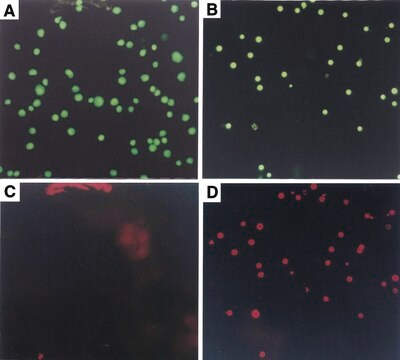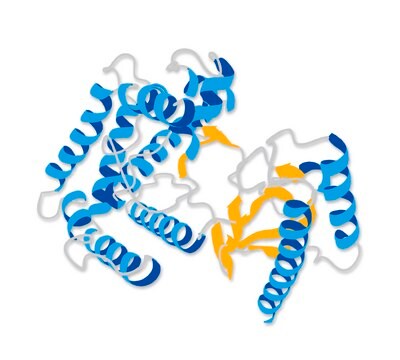EHU114901
MISSION® esiRNA
targeting human ATF4
About This Item
Produtos recomendados
descrição
Powered by Eupheria Biotech
Nível de qualidade
linha de produto
MISSION®
Formulário
lyophilized powder
sequência-alvo de DNAc esiRNA
CCAACAACAGCAAGGAGGATGCCTTCTCCGGGACAGATTGGATGTTGGAGAAAATGGATTTGAAGGAGTTCGACTTGGATGCCCTGTTGGGTATAGATGACCTGGAAACCATGCCAGATGACCTTCTGACCACGTTGGATGACACTTGTGATCTCTTTGCCCCCCTAGTCCAGGAGACTAATAAGCAGCCCCCCCAGACGGTGAACCCAATTGGCCATCTCCCAGAAAGTTTAACAAAACCCGACCAGGTTGCCCCCTTCACCTTCTTACAACCTCTTCCCCTTTCCCCAGGGGTCCTGTCCTCCACTCCAGATCATTCCTTTAGTTTAGAGCTGGGCAGTGAAGTGGATATCACTGAAGGAGATAGGAAGCCAGACTACACTGCTTACGTTGCCATGATCCCT
Ensembl | Número de adesão de ser humano
nº de adesão NCBI
Condições de expedição
ambient
temperatura de armazenamento
−20°C
Categorias relacionadas
Descrição geral
For additional details as well as to view all available esiRNA options, please visit SigmaAldrich.com/esiRNA.
Informações legais
Código de classe de armazenamento
10 - Combustible liquids
Ponto de fulgor (°F)
Not applicable
Ponto de fulgor (°C)
Not applicable
Escolha uma das versões mais recentes:
Já possui este produto?
Encontre a documentação dos produtos que você adquiriu recentemente na biblioteca de documentos.
Global Trade Item Number
| SKU | GTIN |
|---|---|
| EHU114901-20UG | 4061831358919 |
| EHU114901-50UG | 4061831374957 |
Nossa equipe de cientistas tem experiência em todas as áreas de pesquisa, incluindo Life Sciences, ciência de materiais, síntese química, cromatografia, química analítica e muitas outras.
Entre em contato com a assistência técnica






